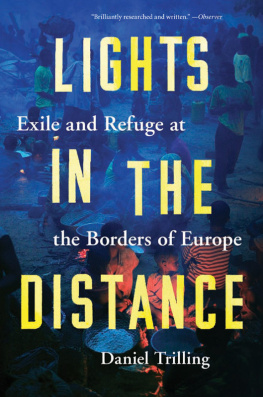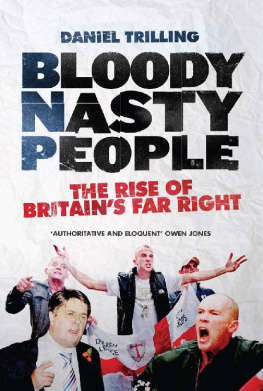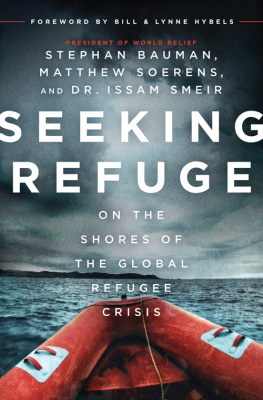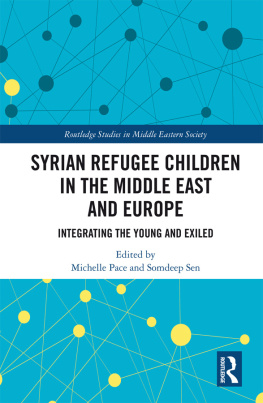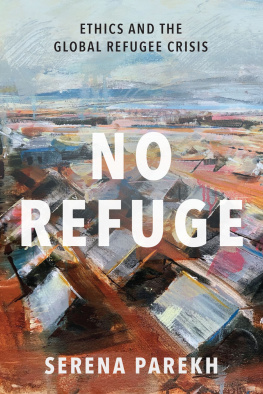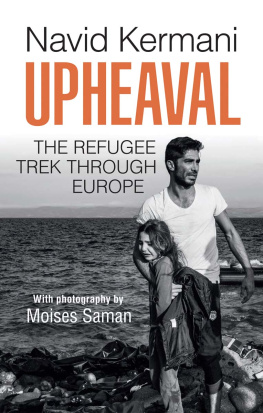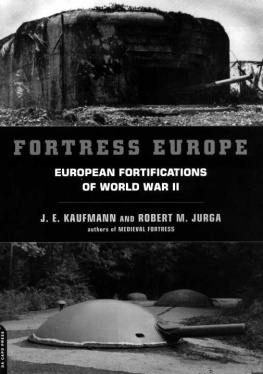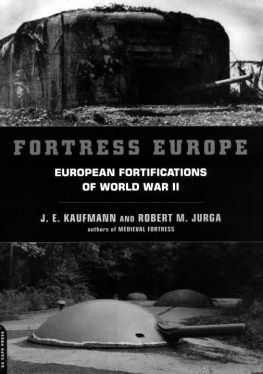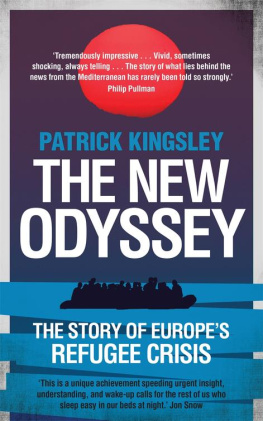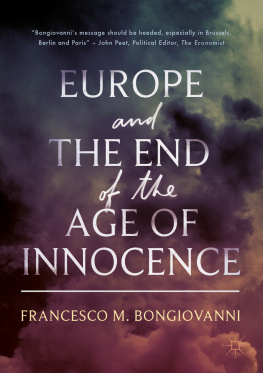Contents

Lights in the Distance
Also by Daniel Trilling
Bloody Nasty People:
The Rise of Britains Far Right
DANIEL TRILLING
Lights in the Distance
Exile and Refuge at the Borders of Europe

First published in the US by Verso 2018
Daniel Trilling 2018
All rights reserved
The moral rights of the author have been asserted
1 3 5 7 9 10 8 6 4 2
Verso
UK: 6 Meard Street, London W1F 0EG
US: 20 Jay Street, Suite 1010, Brooklyn, NY 11201
versobooks.com
Verso is the imprint of New Left Books
ISBN-13: 978-1-78663-219-1
ISBN-13: 978-1-78663-278-4 (US EBK)
Library of Congress Cataloging-in-Publication Data
A catalog record for this book is available from the Library of Congress
Typeset in 11.5/15 pt Sabon LT Std by Jouve (UK), Milton Keynes
Printed in the US by Maple Press
Contents
The history of migration is a history of controls on the movement of all but a wealthy elite. In the past, states sought to restrict the movement of their own populations, through slavery or serfdom, or poor laws and vagrancy acts; today the right to move freely within ones own territory is enshrined in the 1948 Universal Declaration of Human Rights. Instead, the movement of people across international borders is tightly controlled and regulated. As a proportion of the world population, the number of international migrants has stayed relatively steady: roughly 3 per cent since 1960, according to the sociologist Hein de Haas.
This might seem surprising in an age where goods, communication and certain kinds of people can move with greater ease than ever before, but globalization is a highly unequal process. Although the proportion of migrants has not grown significantly, the origin and direction of migration has changed: research by Hein de Haas and Mathias Czaika suggests that people are leaving a much wider range of countries than ever before, and they are heading to a much narrower range of destinations than ever before. They are going to the places where power and wealth have become concentrated.
Europe, and north-western Europe in particular, is one of those places. Most of this migration takes place legally: an estimated nine out of ten migrants who enter Europe do so with permission. But wealthier countries are making increasingly severe efforts to keep out the uninvited, a significant number of whom are refugees fleeing war or persecution. In 1990, according to research by the geographer Reece Jones, twenty countries had walls or fences on their border; by the beginning of 2016, that number had risen to almost seventy.
The European Union, a political and economic alliance of at the time of writing twenty-eight nation states, plus neighbours such as Norway who take part in certain common agreements, has perhaps the worlds most complex system to deter unwanted migrants. Since the 1990s, as borders have come down within Europe, giving most EU citizens free movement and passport-free travel, its external frontier has become increasingly militarized: Amnesty International estimates that, between 2007 and 2013, the EU spent almost two billion euros on fences, surveillance systems and patrols.
What happens to refugees who try to make it past these obstacles? Under the 1951 Refugee Convention, to which all EU members are signatories, states are obliged not to penalize people who cross their borders in search of asylum, or to force them back to territories where they would be in danger. Anybody who asks for asylum is entitled to due process, and to have their claim assessed on an individual basis; officials cant just declare a whole group of asylum seekers genuine or bogus at the stroke of a pen.
In reality, the EU has tried to prevent refugees from reaching its territory wherever possible by closing down legal routes, such as the ability to claim asylum at overseas embassies; by introducing penalties for transport companies that allow people to travel into the EU without the correct documents; and by signing treaties with its neighbours that offer them trade incentives and easier travel for their own citizens in return for policing their borders with the EU more thoroughly. If refugees do make it into the EU, then an agreement known as the Dublin Regulation stipulates that it is the responsibility of the first EU country they set foot in to deal with their asylum claim. If they travel on to a second (or third, or fourth) country, they can be forcibly returned to their point of arrival, with the help of an EU-wide police fingerprint database known as Eurodac. This arguably places the greatest burden on EU members at the blocs southern and eastern edges, which tend to be poorer and less well equipped to support new arrivals.
To give a sense of Europes priorities, in the same period as it spent two billion euros on border security, the EU spent only an estimated 700 million on reception conditions for refugees. There are other kinds of costs, too: in November 2017, a coalition of human rights groups published a list of 33,293 people who had died since 1993 as a result of border militarization, asylum laws, detention policies and deportations in Europe.
*
Border defences often produce or exacerbate the very problems they purport to solve, by forcing irregular migrants to take more dangerous routes, often with increasing reliance on people smugglers, which in turn encourages states to crack down further. Such a process has been at work in Europe in recent years.
According to the office of the UN High Commissioner for Refugees (UNHCR), there are sixty-five million people displaced by conflict in the world today. Of those, twenty-two million have fled their home countries, which makes them refugees under international definitions. The vast majority of these people 86 per cent are hosted in poorer parts of the world; indeed, this proportion has risen in the last decade. Since 2011, however, the number of people coming to Europe to seek asylum has risen sharply due to conflicts taking place beyond the EUs borders.
They have travelled by two principal routes: across the central Mediterranean from North Africa, and through south-eastern Europe via Turkey. The largest group by nationality to take these routes are Syrians; the war in Syria has caused one of the most acute refugee crises in recent memory, although most of the six million Syrian refugees are living in Turkey, Lebanon and Jordan. Those who have come to Europe to seek asylum are joined by people from Iraq, Afghanistan, Pakistan, Eritrea, Somalia, Sudan, Nigeria, Mali and elsewhere.
In the mid-2000s, according to the EUs statistics authority Eurostat, around 250,000 people a year were claiming asylum in the EU. From 2011, as numbers began to rise, Europe continued to make security its priority, rather than the protection of vulnerable people. In 2015, arrivals peaked when well over a million people came to Europe to seek asylum. This is still only a small fraction of the EUs total population of 508 million, but the manner of their arrival was chaotic. Thousands died in the attempt. Most of the migrants who arrived tried to continue their journeys to north-west Europe, and enforcement of the Dublin Regulation effectively collapsed.
You have probably heard this described as Europes refugee crisis. It might better be described as a border crisis. In the twenty-first century, a border is not just a line on a map; it is a system for filtering people that stretches from the edges of a territory into its heart. Asylum seekers are subject to particularly complex and often violent filtering. Once they cross Europes frontiers, their movement is restricted; they are locked up or segregated in accommodation far from city centres. Their right to work or to access social security is denied or severely limited. While their claims are being assessed, often by a process that is opaque, hostile and inconsistent, they live with the threat that what freedoms they do have might be curtailed at any moment. The system tries to place them into categories refugee or economic migrant, legal or illegal, deserving or undeserving that do not always fit the reality of their lives. And if the system breaks down, then people are cast into a legal and moral grey zone that lasts for many months or even years.

